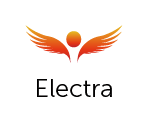Reducing admin, improving oversight, and preparing for legislative change
If you’re responsible for compliance training in your organisation, you’re likely familiar with the daily challenges: coordinating sessions, chasing completions, updating spreadsheets, and trying to stay ahead of ever-changing regulations. It’s a time-consuming and often stressful process, especially when the stakes are high and the margin for error is slim.
Manual systems may have worked in the past, but they are increasingly unsustainable. As outlined in our latest guide, Eliminating the HR Headache, HR teams are under pressure to deliver training that is not only accurate and timely but also scalable and engaging. With major legislative changes on the horizon, the need for a smarter approach has never been more urgent.
Why Manual Compliance Management Is No Longer Enough
Traditional compliance processes rely heavily on manual coordination. Booking rooms, sending invites, tracking attendance, and updating records are all handled separately. These fragmented systems are prone to error and difficult to scale, especially in hybrid working environments where training must be delivered both in-person and online.
This lack of integration creates a cycle of chasing and checking, leaving HR teams with limited visibility and little time to focus on strategic priorities. When compliance failures can lead to financial penalties or reputational damage, the risks are too great to ignore.
Preparing for the Employment Rights Bill
The upcoming Employment Rights Bill, expected to come into effect no earlier than 2026, will introduce sweeping reforms to UK employment law. These include:
• Making unfair dismissal a day-one right
• Strengthening protections against harassment
• Expanding family-friendly policies
• Enhancing access to flexible working
These changes will require organisations to update policies, retrain staff, and ensure that every employee understands their rights and responsibilities under the new framework. For HR teams, this means preparing for a wave of new compliance requirements. Many of these will need to be rolled out quickly and consistently across diverse roles and departments.
Automated compliance training offers a practical solution. It enables HR teams to respond to legislative changes efficiently, ensuring that training is assigned, tracked, and updated without overwhelming internal resources.
How Automation Eases the Burden
Automating compliance does not remove the human element. Instead, it removes the repetitive admin. With the right tools in place, tasks such as booking, enrolment, reminders, and reporting can run in the background. This frees up time and improves accuracy.
Electra’s Learning Toolkit supports this shift by offering:
- Automated booking and scheduling: Training sessions are added to calendars with built-in reminders, reducing the need for manual coordination.
- Self-service portals: Employees can view available courses, book sessions, and manage their own learning. This empowers them to take ownership of their development.
- Audience-based enrolment: Assign training based on job role, department, or previous learning history. This ensures relevance and reduces duplication.
- Certification tracking: Set expiry dates and recertification windows so learners are automatically prompted to refresh their training.
- Real-time reporting: Dashboards and automated reports provide instant insight into training completion and compliance status.
- Attendance registers and assessments: Digital tools help track participation and test understanding. This ensures compliance is more than just a checkbox exercise.
Steps to Automate Your Compliance Strategy
If you are ready to move away from manual processes, here is a practical roadmap:
1. Audit your current setup
Identify training gaps, regulatory requirements, and existing pain points. This will help define your automation goals.
2. Define training assignments
Decide how training should be allocated, whether by role, department, or experience. Use audience functionality to automate enrolment.
3. Configure automation
Set up certification schedules, reminders, and reporting workflows. It may take time upfront, but it pays off in reduced admin later.
4. Test and refine
Run a pilot with a small group to ensure everything works smoothly before rolling it out more widely.
The Result: Compliance Without the Chaos
Once automation is in place, compliance training becomes a background process rather than a daily firefight. HR teams can shift their focus to monitoring effectiveness, updating content, and supporting learners instead of chasing completions. Employees are empowered to manage their own development, and training delivery becomes more flexible, scalable, and aligned with organisational goals.
With major legislative changes on the horizon, organisations that invest in automation now will be better prepared to adapt quickly and confidently. Compliance does not have to be chaotic. With the right systems in place, it becomes a quiet engine running smoothly in the background, keeping your business protected and your people informed.

